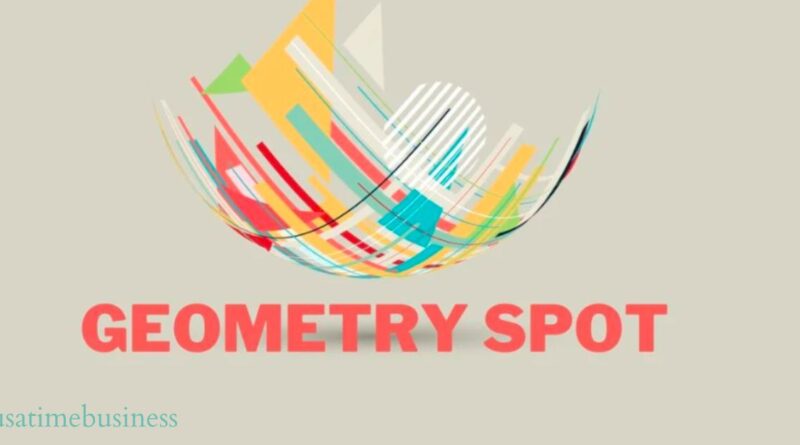Exploring the World of Geometry Spot: A Comprehensive Guide
Welcome to the fascinating world of Geometry Spot, where we dive into the realm of shapes, angles, and patterns that surround us daily!
Join us as we unravel the mysteries of geometry, from its ancient roots to its modern applications.
Get ready to see how this mathematical discipline is beautiful and highly practical in various aspects of our daily routines.
Let’s explore together and discover the wonders of geometry!
Contents
- 1 What is Geometry Spot?
- 2 The History of Geometry and its Importance
- 3 Types of Geometric Shapes and Figures
- 4 Applications of Geometry in Everyday Life
- 5 Common Misconceptions about Geometry
- 6 Fun Activities and Games to Explore Geometry Spot
- 7 Resources for Further Learning and Practice
- 8 Conclusion: The Beauty and Practicality of Geometry
- 9 FAQs
- 9.1 Have more questions about Geometry Spot?
- 9.2 1. What is the best way to study geometry effectively?
- 9.3 2. How can I improve my geometric problem-solving skills?
- 9.4 3. Are there any careers that heavily rely on knowledge of geometry?
- 9.5 4. Can I use technology to enhance my learning experience in geometry?
- 9.6 5. Is it possible to enjoy studying geometry?
- 9.7 Latest Posts!
What is Geometry Spot?
Geometry Spot is your go-to hub for all things related to geometry. It is a virtual playground where you can delve into shapes, sizes, and spatial relationships. Think of it as your personal tour guide through the intricate landscapes of geometric concepts.
Whether you’re a math enthusiast or just curious about the wonders of geometry, Geometry Spot has something for everyone. From basic definitions to advanced theories, this platform caters to learners at every level. Explore tutorials, interactive activities, and engaging resources to make learning geometry fun and accessible.
With Geometry Spot as your companion, you can unlock the secrets behind angles, polygons, circles, and more. Dive deep into symmetry and proportions while sharpening your problem-solving skills. Get ready to expand your geometric knowledge and see math in a new light with Geometry Spot!
The History of Geometry and its Importance
Embark on a journey through time to unravel the captivating history of geometry. Dating back to ancient civilizations, such as the Egyptians and Greeks, geometry has been integral to human knowledge for centuries. These early thinkers laid the foundation for geometric principles that continue to shape our world today.
From Euclid’s groundbreaking “Elements” to Descartes’ development of coordinate geometry, each milestone in geometry’s history has propelled us towards discoveries and innovations. The importance of geometry extends beyond academic realms; it plays a crucial role in various fields like architecture, engineering, art, and even nature.
Understanding the historical evolution of geometric concepts gives us insight into how ideas have evolved. This rich tapestry of mathematical thought showcases human ingenuity and highlights the universal language of geometry – connecting diverse cultures and disciplines across the globe.
Types of Geometric Shapes and Figures
Let’s dive into the fascinating world of geometric shapes and figures.
We have the basic shapes like circles, squares, triangles, and rectangles. Each has its unique properties and characteristics that make them attractive to study.
Moving on to more complex figures, there are polygons such as pentagons, hexagons, octagons, and more. These shapes play a significant role in geometry due to their diverse angles and sides.
Another intriguing category is 3D shapes like cubes, spheres, pyramids, cones, and cylinders. These objects exist all around us in the real world with various applications in architecture and design.
Furthermore, fractals add another layer of complexity with their self-similar patterns that repeat at different scales. They showcase the beauty of mathematics in nature’s intricate designs.
Applications of Geometry in Everyday Life
Have you ever stopped to think about how geometry influences our daily lives? From the architecture of buildings we live into the design of everyday objects we use, geometry plays a crucial role.
When you look at a piece of furniture, the angles and shapes determine its stability and functionality. Even something as simple as arranging furniture in a room involves understanding spatial relationships and proportions.
In cooking, measuring ingredients accurately relies on geometric concepts such as volume and area. Bakers use precise measurements to ensure their cakes rise perfectly, while chefs use angles to cut ingredients evenly.
Driving from point A to point B involves navigating through geometric shapes like circles (roundabouts) or triangles (road signs). Understanding these shapes helps us manoeuvre efficiently on the roads.
So, next time you’re out and about, take a moment to appreciate how geometry surrounds us in everyday life!
Common Misconceptions about Geometry
Regarding geometry, some common misconceptions can often cloud our understanding of this fascinating branch of mathematics. One prevalent misconception is that geometry is only about memorizing shapes and formulas. In reality, geometry goes beyond just rote learning; it involves critical thinking and problem-solving skills.
Another misconception is that geometry is only helpful for architects or engineers. While these professions heavily rely on geometric principles, the applications of geometry extend far beyond these fields. Geometry plays a role in everyday tasks like measuring ingredients for cooking or planning furniture layout in a room.
Some people also believe you must be naturally gifted in math to excel in geometry. Anyone can grasp geometric concepts and improve their spatial reasoning skills with practice and patience.
By debunking these misconceptions, we can even more appreciate the beauty and practicality of geometry in our lives.
Fun Activities and Games to Explore Geometry Spot
Are you looking to make learning geometry more engaging and interactive? Explore Geometry Spot through fun activities and games that spark your curiosity and creativity.
Challenge yourself with geometric puzzles that test your spatial reasoning skills. From tangrams to logic problems, these brain teasers will keep you entertained while sharpening your math abilities.
Get hands-on with activities like building 3D models using everyday materials or exploring symmetry by creating intricate designs. These practical tasks allow you to see the beauty of geometry in action.
Engage in online games that gamify geometric concepts, making learning feel like play. Whether solving shape riddles or navigating through geometric mazes, plenty of virtual adventures await you on Geometry Spot.
By incorporating enjoyable activities into your math practice, you’ll discover a new appreciation for the world of geometry and its relevance in everyday life. So dive in, have fun, and let your imagination soar!
Resources for Further Learning and Practice
Ready to take your geometry skills to the next level? Look no further than the plethora of resources available for further learning and practice in Geometry Spot. Whether you’re a student looking to sharpen your knowledge or an enthusiast delving deeper into the world of shapes and figures, there are plenty of options.
Online platforms offer interactive tutorials, videos, and quizzes catering to various expertise levels. From beginner basics to advanced topics, these resources provide a dynamic way to enhance your understanding of geometric concepts.
For those who prefer more traditional methods, textbooks, workbooks, and study guides can serve as valuable tools for structured learning. Dive into the pages filled with equations, diagrams, and exercises to reinforce fundamental principles and boost problem-solving skills.
Remember community forums and study groups where you can connect with like-minded individuals passionate about geometry. Engaging in discussions, sharing tips and tricks, or seeking advice can foster a collaborative learning environment that enriches your educational journey.
Conclusion: The Beauty and Practicality of Geometry
As we wrap up our journey through Geometry Spot, it’s clear that geometry is not just about shapes and angles—it’s a language of patterns, symmetry, and relationships. The beauty of geometry lies in its ability to describe the world around us with precision and elegance.
From ancient civilizations to modern technology, geometry has played a crucial role in shaping our understanding of the physical universe. Its practical applications are vast, from architecture and design to engineering and astronomy.
By exploring geometric concepts, we unlock doors to creativity and problem-solving skills that can be applied in various aspects of our lives. Whether you realize it or not, geometry influences everything from art and nature to everyday objects like furniture and buildings.
So next time you look at a snowflake or marvel at the structure of a building, remember the intricate dance of shapes and lines that make up our world—a testament to the enduring allure and utility of geometry.
FAQs
Have more questions about Geometry Spot?
Here are some commonly asked queries to help you navigate the world of geometry even better:
1. What is the best way to study geometry effectively?
To study geometry effectively, it’s essential to practice regularly, understand the fundamental concepts, and seek help from teachers or online resources when needed.
2. How can I improve my geometric problem-solving skills?
Improving your problem-solving skills in geometry involves practising different types of problems, breaking them down into smaller parts, and exploring various strategies for solving them.
3. Are there any careers that heavily rely on knowledge of geometry?
Yes, architecture, engineering, computer graphics design, and physics often require a strong understanding of geometric principles.
4. Can I use technology to enhance my learning experience in geometry?
Absolutely! There are numerous apps and online tools available that can make learning geometry more interactive and engaging.
5. Is it possible to enjoy studying geometry?
Of course! With a curious mindset and an appreciation for the beauty of shapes and figures around us, studying geometry can be both enjoyable and rewarding.
Embrace the world of Geometry Spot with curiosity and enthusiasm – who knows what fascinating discoveries await you along its geometric paths!






